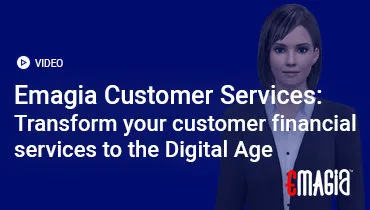In the intricate dance of financial operations, the journey of cash from a customer’s payment to its accurate reflection in a company’s ledger is a deceptively complex one. This critical step, known as cash application, sits at the heart of the accounts receivable (AR) function, serving as the bridge between sales and liquidity. While seemingly straightforward – simply matching incoming funds to outstanding invoices – the reality is often a labyrinth of disparate data, manual effort, and frustrating discrepancies. Understanding what is cash application in accounting is the first step, but truly mastering it requires confronting its inherent difficulties.
For many businesses, the cash application process remains a significant bottleneck, directly impacting cash flow, financial reporting accuracy, and even customer relationships. The traditional methods, often reliant on human intervention and outdated systems, are ill-equipped to handle the growing volume and complexity of modern payments. This comprehensive article will delve deep into the multifaceted challenges in cash application process, exploring the root causes of inefficiency, the hidden costs they incur, and the profound impact they have on a company’s financial health. By shedding light on these persistent application challenges, we aim to provide a clearer path towards more streamlined, accurate, and strategic accounts receivable management.
Understanding the Cash Application Process: A Foundational Overview
What is Cash Application? Defining the Core Function
What is cash application? At its essence, `cash application` is the process of precisely matching incoming customer payments to their corresponding open invoices within a company’s `accounts receivable` ledger. This ensures that a customer’s account balance is accurately updated, reflecting the payment received. It’s a vital step in the Order-to-Cash (O2C) cycle, directly preceding `cash posting` to the general ledger. Without accurate `cash application`, a business cannot truly know its financial position, leading to potential misstatements and operational inefficiencies. This is the fundamental `definition of cash application`.
The process also involves identifying any deductions, short payments, or overpayments and correctly coding them for subsequent resolution. Understanding `what is a cash application` is crucial for any finance professional.
The Role of Cash Application in Accounts Receivable: Bridging Sales to Cash
The role of cash application in accounts receivable is pivotal; it acts as the bridge converting sales into usable cash. In the `ar cash application` workflow, once an invoice is issued and a payment is received, the `cash application process` ensures that the payment is correctly attributed to the specific invoice(s) it covers. This immediate and accurate application is critical for several reasons: it frees up credit lines for customers, prevents unnecessary `collections calls`, and provides real-time visibility into the company’s `cash position`. An inefficient `ar cash application` can create a significant bottleneck, delaying the recognition of revenue and hindering `cash flow`. It’s a central part of `cash application accounting`.
Traditional Cash Application Workflow: A Manual Burden
For many organizations, the traditional cash application workflow has historically been a manual burden. This often involves `AR clerks` performing repetitive, time-consuming tasks:
- Manually opening physical mail containing checks and `remittance advice`.
- Logging into multiple bank portals or `lockbox services` to download `payment files` (e.g., BAI2, MT940).
- Sifting through emails, PDFs, and faxes to find `remittance information`.
- Painstakingly comparing `payment details` with `open invoices` in the `ERP system`.
- Manually keying in data, often leading to `data entry errors`.
- Investigating and resolving `payment discrepancies` and `deductions`.
This `manual cash application process` is not only inefficient but also prone to errors, especially as `payment volumes` increase. This is the reality of many `cash apps process` today.
Core Challenges in Cash Application Process: Identifying the Bottlenecks
Decoupled Remittances: The Missing Link in Payment Data
One of the most pervasive challenges in cash application process is decoupled remittances, often the missing link in payment data. This occurs when the `payment` arrives separately from its `remittance advice` (the document detailing which invoices the payment covers). For instance, a customer might send an `ACH payment` directly to the bank, but the `remittance details` arrive later via email, a customer portal, or even a physical mail.
Impact: `AR teams` must then manually search across various sources (bank statements, emails, portals) to find the matching `remittance`, a highly time-consuming and frustrating task. Without this crucial information, the payment remains `unapplied`, delaying `cash posting` and distorting `accounts receivable` balances. This is a primary `application challenge`.
Complexity: The sheer variety of ways `remittance information` can be sent (or not sent) exacerbates this issue, making it difficult to standardize the `cash apps process`.
Multiple Payment Formats and Channels: Data Inconsistency
Businesses receive payments through a multitude of channels and in various formats, leading to multiple payment formats and channels and significant data inconsistency.
- Checks: Physical documents requiring manual handling or `lockbox services`.
- Electronic Payments: `ACH`, `wire transfers`, `credit card payments`, each with different data structures.
- Digital Wallets/Platforms: Payments from PayPal, Stripe, or other `online payment processors`.
- Customer Portals: Some large customers use their own `AP portals` to provide `remittance data`.
Impact: Each format requires different processing procedures, slowing down the `cash application process` and increasing the likelihood of errors during manual data extraction and entry. The lack of standardization across these formats makes it difficult to achieve high `straight-through processing` rates. This is a major `cash application accounting` hurdle.
Deductions, Short Pays, and Overpayments: The Reconciliation Nightmare
Deductions, short pays, and overpayments are common occurrences that create a true reconciliation nightmare in the `cash application process`.
- Short Pays: When a customer pays less than the invoice amount, often due to discounts taken, returns, or disputes.
- Deductions: Specific amounts subtracted by the customer for various reasons (e.g., trade promotions, damaged goods, pricing errors).
- Overpayments: When a customer pays more than the invoice amount, requiring a refund or credit memo.
Impact: Each of these scenarios requires manual investigation, validation, and proper coding in the `ERP system`. This adds significant complexity and time to the `cash application` workflow, diverting `AR staff` from more strategic tasks. Incorrectly coded deductions can lead to `revenue leakage` or unresolved disputes. This is a critical `ar cash application` problem.
High Transaction Volume: Scaling Challenges for Manual Processes
For growing businesses, high transaction volume presents significant scaling challenges for manual processes within the `cash application process`.
Impact: As the number of daily payments increases, a manual `cash application team` struggles to keep pace, leading to growing backlogs of `unapplied cash`. This directly impacts `DSO` (Days Sales Outstanding) and `cash flow`, as funds sit idle without being recognized. Hiring more `AR clerks` to handle increased volume is often not a sustainable or cost-effective solution, as it compounds management overhead and still doesn’t eliminate human error. This is a core `application challenges` for scaling businesses.
Seasonal Spikes: Businesses with seasonal peaks experience even greater strain, with `AR teams` struggling to process payments during high-volume periods.
Manual Errors and Inaccuracies: The Human Factor
Despite the best efforts of dedicated `AR teams`, manual errors and inaccuracies are an inherent risk due to the human factor in the `cash application process`.
- Data Entry Mistakes: Typographical errors when keying in `payment amounts`, `invoice numbers`, or `customer IDs`.
- Incorrect Matching: Applying a payment to the wrong invoice or customer account, especially with ambiguous `remittance data`.
- Misinterpretation: Incorrectly deciphering unstructured `remittance advice` or `deduction reasons`.
Impact: These errors lead to inaccurate `AR balances`, requiring time-consuming corrections and `reconciliations`. They can result in misstated financial statements, incorrect `credit limits`, and frustrated customers who receive `dunning notices` for already paid invoices. The cost of correcting these errors can be substantial, making it a key `cash application accounting` issue.
Lack of Real-Time Visibility: Impaired Financial Decision-Making
The lack of real-time visibility into `cash application status` severely impairs financial decision-making.
Impact: When payments are stuck in a manual `cash application backlog`, finance leaders lack an accurate, up-to-date picture of the company’s true `cash position`. This makes it difficult to forecast `cash flow` accurately, manage `working capital`, or make informed decisions about investments, debt, or `supplier payments`. The “black box” nature of a manual `cash apps process` hinders strategic financial management. This is a major `cash application management` concern.
Delayed Reporting: It also delays financial reporting, as `AR balances` cannot be closed until `cash is applied`.
Strained Customer Relationships: The Hidden Cost of Inefficiency
Perhaps one of the most overlooked challenges in cash application process is the impact on strained customer relationships, representing a hidden cost of inefficiency.
Impact: When payments are not applied promptly or correctly, customers may receive `dunning notices` for invoices they’ve already paid. This leads to frustration, loss of trust, and unnecessary `customer service` inquiries. It can damage long-term business relationships and even lead to customer churn. In today’s competitive landscape, a smooth `payment experience` is crucial for `customer satisfaction`, and an inefficient `cash application process` directly undermines this. This is a significant `about cash application` consideration.
Credit Holds: Delayed `cash application` can also lead to customers being placed on `credit hold` even when their payments have been received, preventing them from placing new orders.
Consequences of Neglecting Cash Application Challenges: The Domino Effect
Delayed Cash Flow and Increased Days Sales Outstanding (DSO)
Neglecting the challenges in cash application process directly leads to delayed cash flow and increased `Days Sales Outstanding (DSO)`. When payments are not applied quickly, funds remain “unapplied” in the bank account, unable to be recognized as revenue or used for operations. This directly impacts a company’s liquidity and `working capital`. A high `DSO` means it takes longer for a business to convert its sales into cash, potentially forcing reliance on external financing or hindering investment opportunities. This is a critical `ar cash application` outcome.
Inaccurate Financial Reporting and Forecasting: Misleading Insights
The consequences also include inaccurate financial reporting and forecasting, providing misleading insights. If `cash applications` are delayed or erroneous, the `accounts receivable` ledger will not accurately reflect outstanding balances. This can lead to misstated financial statements, incorrect revenue recognition, and flawed `cash flow forecasts`. Financial leaders relying on this inaccurate data will make suboptimal strategic decisions, potentially impacting profitability and growth. This is a serious `cash application accounting` issue.
Higher Operational Costs and Reduced Productivity: Resource Drain
Neglecting `cash application challenges` results in higher operational costs and reduced productivity, creating a significant resource drain. The manual effort involved in chasing `remittance data`, correcting errors, and resolving `disputes` consumes substantial `AR staff` time. This leads to increased labor costs, potential overtime, and a diversion of valuable human capital from more strategic activities. The inherent inefficiencies of a manual `cash apps process` directly impact the bottom line. This is a major `application challenges` for finance teams.
Increased Fraud Risk and Compliance Issues: Security Vulnerabilities
Unaddressed `cash application challenges` can lead to increased fraud risk and compliance issues, exposing security vulnerabilities. Manual processes, especially involving paper checks, are more susceptible to fraud (e.g., check alteration, internal misappropriation). A lack of clear audit trails and real-time visibility makes it harder to detect and prevent fraudulent activities. Furthermore, inaccurate `cash application` can lead to non-compliance with accounting standards and regulatory requirements, potentially resulting in fines or penalties. This highlights the need for a `secure cash application process`.
Negative Impact on Customer Experience: Eroding Trust
Finally, neglecting these challenges has a profound negative impact on customer experience, eroding trust. Customers who consistently receive incorrect statements or `dunning notices` for payments they’ve already made will become frustrated and lose confidence in the business. This can damage long-term relationships, lead to lost business, and negatively impact a company’s reputation. A smooth, accurate, and transparent `cash application process` is essential for maintaining `customer satisfaction` and loyalty. This is a key `about cash application` consideration for customer-centric businesses.
Strategies to Overcome Cash Application Challenges: Towards Automation
Standardizing Payment and Remittance Data: The First Step
A fundamental strategy to overcome `cash application challenges` is standardizing payment and `remittance data`. This is often the first and most crucial step towards automation.
- Encourage Electronic Payments: Promote `ACH`, `wire transfers`, and `credit card payments` over checks.
- Provide Clear Remittance Instructions: Guide customers on how to send `remittance data` (e.g., dedicated email address, specific format).
- Utilize Customer Payment Portals: Implement a `cash application solutions` portal where customers can view `invoices`, make `payments`, and provide `remittance details` in a structured format. This is a key `cash application management` tool.
By reducing the variability of incoming data, businesses lay the groundwork for effective `automation`.
Leveraging Cash Application Software: The Power of Automation
The most impactful strategy is leveraging `cash application software`, harnessing the power of automation. Modern `cash application solutions` are designed to address the complexities of the `cash apps process`.
- Automated Data Capture: Use `OCR` and `NLP` to extract `remittance data` from various formats (emails, PDFs, scanned checks).
- Intelligent Matching: Employ `AI` and `Machine Learning` to automatically match `payments` to `invoices`, even with partial or `decoupled remittances`.
- Automated Exception Handling: Route `unmatched payments` or `deductions` for review, often with `AI-driven suggestions`.
- ERP Integration: Seamlessly post `cash` to the `ERP system` in real-time.
This `automatic cash application` significantly reduces manual effort, errors, and `DSO`. This is the core of `cash application solutions`.
Implementing AI and Machine Learning: Intelligent Automation
For truly transformative results, businesses should focus on implementing `AI` and `Machine Learning` for intelligent automation.
- Self-Learning Algorithms: `AI` continuously learns from historical `payment patterns` and `AR analyst` actions, improving its matching accuracy over time.
- Predictive Capabilities: `AI` can predict potential `unapplied cash` or `delinquencies`, allowing for proactive intervention.
- Handling Complexity: `AI` excels at processing `unstructured data` and `complex matching scenarios` that rule-based systems cannot.
This `ai-powered cash application process` moves beyond simple automation to truly intelligent `cash application management`, ensuring high `straight-through processing` rates. This is how `emagia cash application` excels.
Streamlining Internal Workflows: Collaboration and Efficiency
Beyond technology, streamlining internal workflows is crucial for fostering collaboration and efficiency within the `cash application process`.
- Cross-Functional Collaboration: Encourage communication and data sharing between `AR`, `collections`, `sales`, and `customer service` teams.
- Defined Processes: Establish clear, standardized procedures for handling `payments`, `remittances`, and `exceptions`.
- Role Clarity: Ensure `AR analysts` understand their responsibilities and how their work impacts downstream processes.
An optimized workflow, supported by `cash application software`, ensures that `payments` are processed swiftly and accurately. This improves the overall `cash apps process`.
Continuous Monitoring and Optimization: Adapting to Change
Finally, continuous monitoring and optimization are essential for adapting to change and sustaining performance in the `cash application process`.
- KPI Tracking: Regularly monitor key performance indicators (KPIs) such as `straight-through processing rate`, `unapplied cash percentage`, and `DSO`.
- Feedback Loops: Establish mechanisms for `AR analysts` to provide feedback on `AI matches` and exceptions, helping the `AI` learn and improve.
- Regular Reviews: Periodically review the `cash application process` and `software configuration` to identify areas for further improvement or adaptation to new `payment behaviors`.
This iterative approach ensures that the `cash application solution` remains highly effective and delivers long-term value. This is how `cash application software companies` maintain their edge.
Emagia: Transforming Cash Application Challenges into Strategic Advantage
The persistent challenges in cash application process can feel like an insurmountable obstacle for many businesses, draining resources, delaying cash flow, and impacting customer trust. Emagia understands these deep-seated `application challenges` and offers a revolutionary approach to `accounts receivable cash application` that transcends traditional automation. Our `AI-powered cash application process` is specifically engineered to convert your most complex `cash application` pain points into a source of strategic advantage and unprecedented financial agility.
Emagia’s intelligent `cash application solutions` are built to conquer the labyrinth of `decoupled remittances`, diverse `payment formats`, and intricate `deductions`. Leveraging advanced `Machine Learning` and `Natural Language Processing`, our platform automatically captures and interprets `remittance data` from virtually any source – be it bank files, emails, PDFs, or `customer AP portals`. This `touchless data capture` feeds our `AI-driven auto-match engine`, which achieves industry-leading straight-through processing rates, often exceeding 95%. This means your `payments` are matched to `invoices` and posted to your `ERP` (including `Netsuite automated cash application`) with minimal human intervention, dramatically accelerating `cash posting` and reducing `unapplied cash`.
Beyond simple matching, Emagia’s `AI` intelligently handles the complexities of `short pays` and `deductions`. Our system learns from historical patterns to automatically code `deduction reasons`, and for the few exceptions that require human review, it provides all necessary information and routes them to the right `AR analyst` for rapid resolution. This intelligent exception management frees your `AR team` from mundane, repetitive tasks, allowing them to focus on high-value activities like `dispute resolution`, `customer relationship management`, and strategic `cash flow analysis`. Emagia’s `cash application management` capabilities provide real-time visibility into your `cash position`, enabling accurate `forecasting` and informed decision-making. By transforming the `cash application process` into an `automatic cash application` powerhouse, Emagia empowers businesses to achieve superior financial performance, lower operational costs, and build stronger, more transparent relationships with their customers.
FAQs about Challenges in Cash Application Process
What is the cash application process in accounting?
The cash application process in accounting is the crucial step of matching incoming customer payments to their corresponding open invoices in the accounts receivable ledger, ensuring accurate financial records and updated customer balances.
What are the biggest challenges in cash application?
The biggest challenges include decoupled remittances (payment and remittance arriving separately), multiple payment formats and channels, handling deductions and short payments, high transaction volumes, manual errors, lack of real-time visibility, and strained customer relationships due to inefficiencies.
Why are decoupled remittances a challenge?
Decoupled remittances are a challenge because the payment arrives without clear instructions on which invoices it covers, forcing AR teams to manually search for matching remittance data across various sources, leading to delays and errors.
How do manual errors impact the cash application process?
Manual errors lead to inaccurate accounts receivable balances, misstated financial reports, unnecessary collections calls to customers who have already paid, and significant time and cost spent on corrections and reconciliations.
How can technology help overcome cash application challenges?
Technology, especially AI-powered cash application software, can automate data capture from various sources, intelligently match payments to invoices, handle exceptions, integrate with ERP systems, and provide real-time visibility, significantly reducing manual effort and improving accuracy.
What is the impact of inefficient cash application on cash flow?
Inefficient cash application leads to delayed cash flow, as funds remain unapplied and unrecognized. This increases Days Sales Outstanding (DSO), impacts working capital, and hinders a company’s ability to make timely financial decisions or investments.
What is an automated cash application network?
An automated cash application network refers to a system or platform that connects various payment sources, banks, and ERPs to automatically process and apply cash. It often leverages AI and RPA to streamline the entire cash application process across multiple channels and formats.



